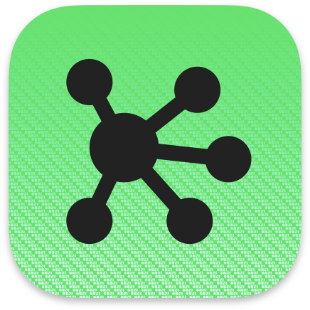Related Research Articles

Computer-Aided Design (CAD) is the use of computers to aid in the creation, modification, analysis, or optimization of a design. This software is used to increase the productivity of the designer, improve the quality of design, improve communications through documentation, and to create a database for manufacturing. Designs made through CAD software are helpful in protecting products and inventions when used in patent applications. CAD output is often in the form of electronic files for print, machining, or other manufacturing operations. The terms computer-aided drafting (CAD) and computer-aided design and drafting (CADD) are also used.

In human–computer interaction, paper prototyping is a widely used method in the user-centered design process, a process that helps developers to create software that meets the user's expectations and needs – in this case, especially for designing and testing user interfaces. It is throwaway prototyping and involves creating rough, even hand-sketched, drawings of an interface to use as prototypes, or models, of a design. While paper prototyping seems simple, this method of usability testing can provide useful feedback to aid the design of easier-to-use products. This is supported by many usability professionals.

In systems engineering and software engineering, requirements analysis focuses on the tasks that determine the needs or conditions to meet the new or altered product or project, taking account of the possibly conflicting requirements of the various stakeholders, analyzing, documenting, validating and managing software or system requirements.

OmniGraffle is a diagramming and digital illustration application for macOS and iOS created by The Omni Group.

A website wireframe, also known as a page schematic or screen blueprint, is a visual guide that represents the skeletal framework of a website. The term wireframe is taken from other fields that use a skeletal framework to represent 3 dimensional shape and volume. Wireframes are created for the purpose of arranging elements to best accomplish a particular purpose. The purpose is usually driven by a business objective and a creative idea. The wireframe depicts the page layout or arrangement of the website's content, including interface elements and navigational systems, and how they work together. The wireframe usually lacks typographic style, color, or graphics, since the main focus lies in functionality, behavior, and priority of content. In other words, it focuses on what a screen does, not what it looks like. Wireframes can be pencil drawings or sketches on a whiteboard, or they can be produced by means of a broad array of free or commercial software applications. Wireframes are generally created by business analysts, user experience designers, developers, visual designers, and by those with expertise in interaction design, information architecture and user research.

User interface (UI) design or user interface engineering is the design of user interfaces for machines and software, such as computers, home appliances, mobile devices, and other electronic devices, with the focus on maximizing usability and the user experience. In computer or software design, user interface (UI) design primarily focuses on information architecture. It is the process of building interfaces that clearly communicates to the user what's important. UI design refers to graphical user interfaces and other forms of interface design. The goal of user interface design is to make the user's interaction as simple and efficient as possible, in terms of accomplishing user goals.
EmEditor is a lightweight extensible commercial text editor for Microsoft Windows. It was developed by Yutaka Emura of Emurasoft, Inc. It includes full Unicode support, 32-bit and 64-bit builds, syntax highlighting, find and replace with regular expressions, vertical selection editing, editing of large files, and is extensible via plugins and scripts. The software has free trial and after that it downgrades to free version, which still can handle huge files and regex.

In manufacturing and design, a mockup, or mock-up, is a scale or full-size model of a design or device, used for teaching, demonstration, design evaluation, promotion, and other purposes. A mockup may be a prototype if it provides at least part of the functionality of a system and enables testing of a design. Mock-ups are used by designers mainly to acquire feedback from users. Mock-ups address the idea captured in a popular engineering one-liner: "You can fix it now on the drafting board with an eraser or you can fix it later on the construction site with a sledge hammer".
User experience design is the process of defining the experience a user would go through when interacting with a company, its services, and its products. Design decisions in UX design are often driven by research, data analysis, and test results rather than aesthetic preferences and opinions. Unlike user interface design, which focuses solely on the design of a computer interface, UX design encompasses all aspects of a user's perceived experience with a product or website, such as its usability, usefulness, desirability, brand perception, and overall performance. UX design is also an element of the customer experience (CX), which encompasses all aspects and stages of a customer's experience and interaction with a company.
ProtoShare is a collaborative software tool from Astound Commerce, used for creating, reviewing, and refining website, mobile and web application prototypes. It enables individuals and companies to visualize project requirements by building website wireframes and application prototypes that team members and stakeholders can then review and comment on in real-time. ProtoShare is not a Flash tool; it uses HTML, CSS, and JavaScript. ProtoShare also helps development teams move from the waterfall method to the agile process through iterative development. It is available online as a SaaS (Software-as-a-Service) tool or as self-hosted for enterprise.
Justinmind is a prototyping and wireframing tool for the creation of high-fidelity prototypes of web and mobile apps. It’s known for its ability to render realistic versions of a finished product as well offering collaboration, interaction and design features. Overall, it’s grown into one of the most popular prototyping tools in the industry.
A user interface specification is a document that captures the details of the software user interface into a written document. The specification covers all possible actions that an end user may perform and all visual, auditory and other interaction elements.

The Pidoco Usability Suite is a cloud-based collaboration software created by Pidoco GmbH for creating, sharing and testing wireframes, mockups, and prototypes of websites, mobile apps, and enterprise software applications.
Balsamiq Studios is an ISV founded in March 2008 by Peldi Guilizzoni, a former Adobe senior software engineer. The Web-based Balsamiq mockup tool was launched in June 2008. Balsamiq has 33 employees based in San Francisco, Sacramento, Chicago, Bologna, Paris, and Bremen. In 2011, Balsamiq achieved almost US$5 million in sales, and US$6.4 million in 2015.
Fluid UI is a browser-based wireframing and prototyping tool developed by Fluid Software and used to design mobile touch interfaces.
Proto.io is an application prototyping platform launched in 2011 and developed by PROTOIO Inc. Originally designed to prototype on mobile devices, Proto.io has expanded to allow users to prototype apps for anything with a screen interface, including Smart TVs, digital camera interfaces, cars, airplanes, and gaming consoles. Proto.io utilizes a drag and drop user interface (UI) and does not require coding.
WireframeSketcher is a wireframing tool developed by Peter Severin and first released in November 2008. WireframeSketcher software is a member of Eclipse Foundation. It is used for creating wireframes, mockups and prototypes for desktop, web and mobile applications. It allows the designer to create screens by arranging pre-built widgets using a drag-and-drop WYSIWYG editor and then organize screens into interactive storyboards. The application is offered in a desktop version as well as a plug-in for any Eclipse IDE such as Flash Builder, ColdFusion Builder, Aptana, MyEclipse and Zend Studio. WireframeSketcher is a general purpose tool, but it also provides specialized widget libraries for Android, iOS and Windows Phone.

Sketch is a vector graphics editor for macOS developed by the Dutch company Sketch B.V.. It was first released on 7 September 2010 and won an Apple Design Award in 2012. It also has a web application that allows users to share files online.
Adobe XD is a vector design tool for web and mobile applications, developed and published by Adobe Inc. It is available for macOS and Windows, and there are versions for iOS and Android to help preview the result of work directly on mobile devices. Adobe XD enables website wireframing and creating click-through prototypes.

Topcoder Open (TCO) was an annual design, software development, data science and competitive programming championship, organized by Topcoder, and hosted in different venues around US. In the first two years, 2001 and 2002, the tournament was titled TopCoder Invitational.
References
- ↑ "Update History of ForeUI - ForeUI". foreui.com. Retrieved 2021-04-07.
- ↑ "The Epsilon Award - the nominated of 2010". Archived from the original on 2010-12-18. Retrieved 2011-01-01.